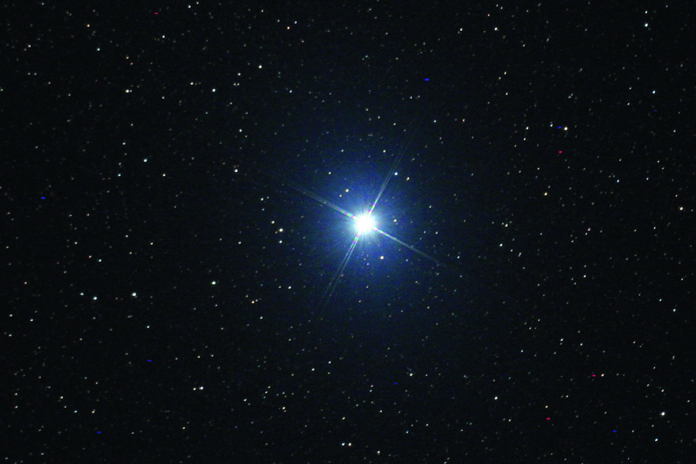Altair is the brightest star in the Aquila Constellation, located at the “neck” of the eagle. It ranks 12th among the brightest stars in the sky. It’s one of the closest stars to Earth that can be seen with the naked eye.
Its name comes from a similar-sounding Arabic word meaning “soaring eagle.” The star has been known to various cultures for thousands of years: Ancient Greece called it “Aetos” (meaning “Eagle”), the Sumerians and Babylonians called it the “Star of the Eagle,” the people of Micronesia called it the “Great Breadfruit,” the Maori referred to it as the “Celestial Pole,” and it’s sometimes called the “Jupiter Bird.”
Altair forms the apex of the Summer Triangle along with Vega and Deneb, and it also makes up a known line of stars called the Eagle Family. The Summer Triangle is located against the backdrop of the Milky Way.
Main Characteristics
- Altair is a white-hot star of the main sequence (a white dwarf).
- Its age is approximately 1 billion years (fairly young).
- Distance from the Solar System: 5.15 parsecs (159 trillion km). It’s located in an interstellar cloud of gas and dust.
- Mass: about 1.8 times that of the Sun.
- Radius: on average about 1.7 times that of the Sun. Due to its high rotation speed, it’s significantly flattened. The diameter at the equator exceeds that at the poles by 22%.
- Surface temperature: around 8220 degrees Celsius at the poles, decreasing towards the equator to 6620 degrees Celsius.
- Equatorial rotation speed: 286 km/sec (compared to 2 km/sec for the Sun).
- Radial velocity: -26.1 km/sec. According to measurements, it is consistently approaching Earth.
- Luminosity: Altair’s luminosity is 10.7 times greater than that of the Sun, but due to its high rotation speed, there is a phenomenon called gravitational darkening – a decrease in brightness closer to the equator.
Altair does not have a defined color structure; uneven bluish-white color transitions are observed. It possesses a weak source of coronal X-ray emissions with the main activity along the star’s equator.
Interesting Facts about Altair:
- The star has an ellipsoidal shape rather than a spherical one.
- The first image of its surface was obtained in 2007 using an interferometer, confirming the effects of flattening and gravitational darkening of Altair.
- Despite its relatively close proximity to Earth, scientists can’t get closer to it. To study the star’s surface in more detail, a telescope with a 300-meter diameter mirror is needed, and we currently don’t have such instruments.
- Altair is one of the stars in the asterism called the “Scales’ Beam,” forming an almost straight line.
- It is surrounded by a bright glow called the “Shining Eye,” essentially emissions from a nearby nebula located next to the star.
- NASA’s lunar module was named after Altair in 2007.
- Altair has three optical companions, not physically close but within direct line of sight. In 2005, barely noticeable disks were discovered around Altair.
- In Japanese culture, Altair is considered the patron of lovers willing to do anything for love. Every year on July 7, during the close approach of Vega and Altair, the famous traditional Tanabata festival is held.
- Altair’s name was given to one of the horses brought by the Magi to the newborn Jesus.
In American cinema, it has grown to the size of a galaxy, and in the action-adventure video game Assassin’s Creed, it gave its name to one of the main characters. It is also found in many works of art. - There is currently no forecast for the end of the star’s life cycle due to its still very young age.
